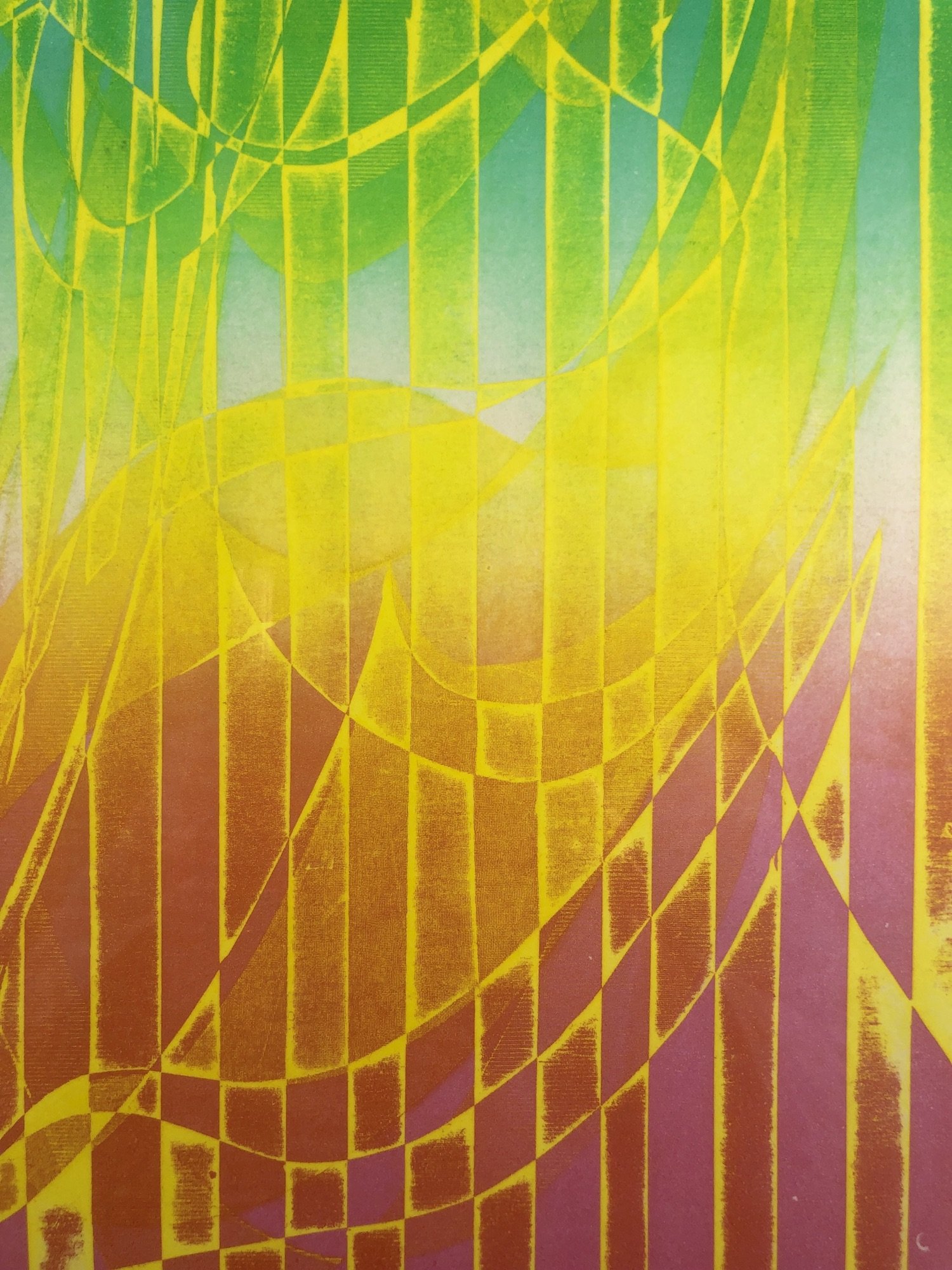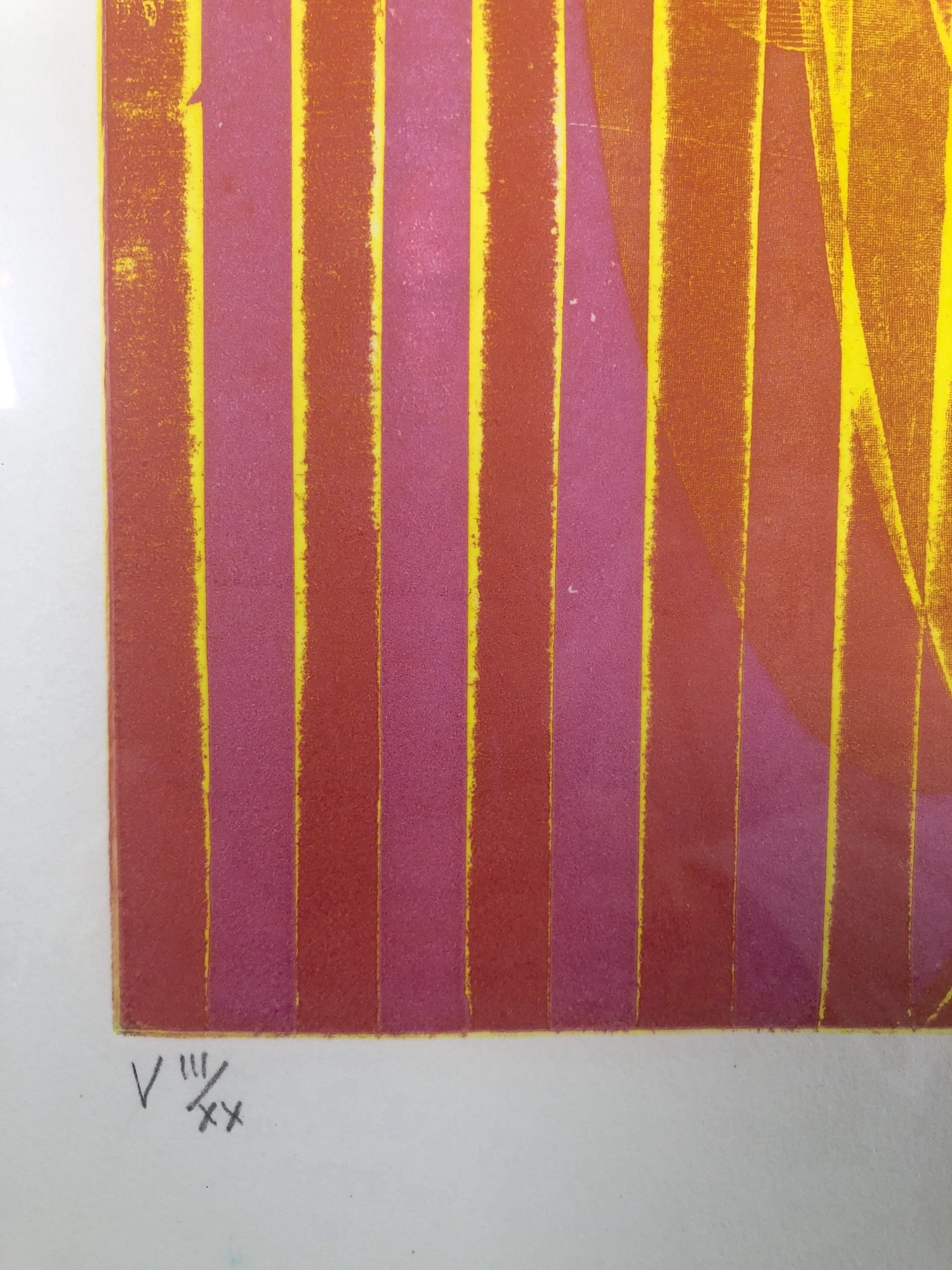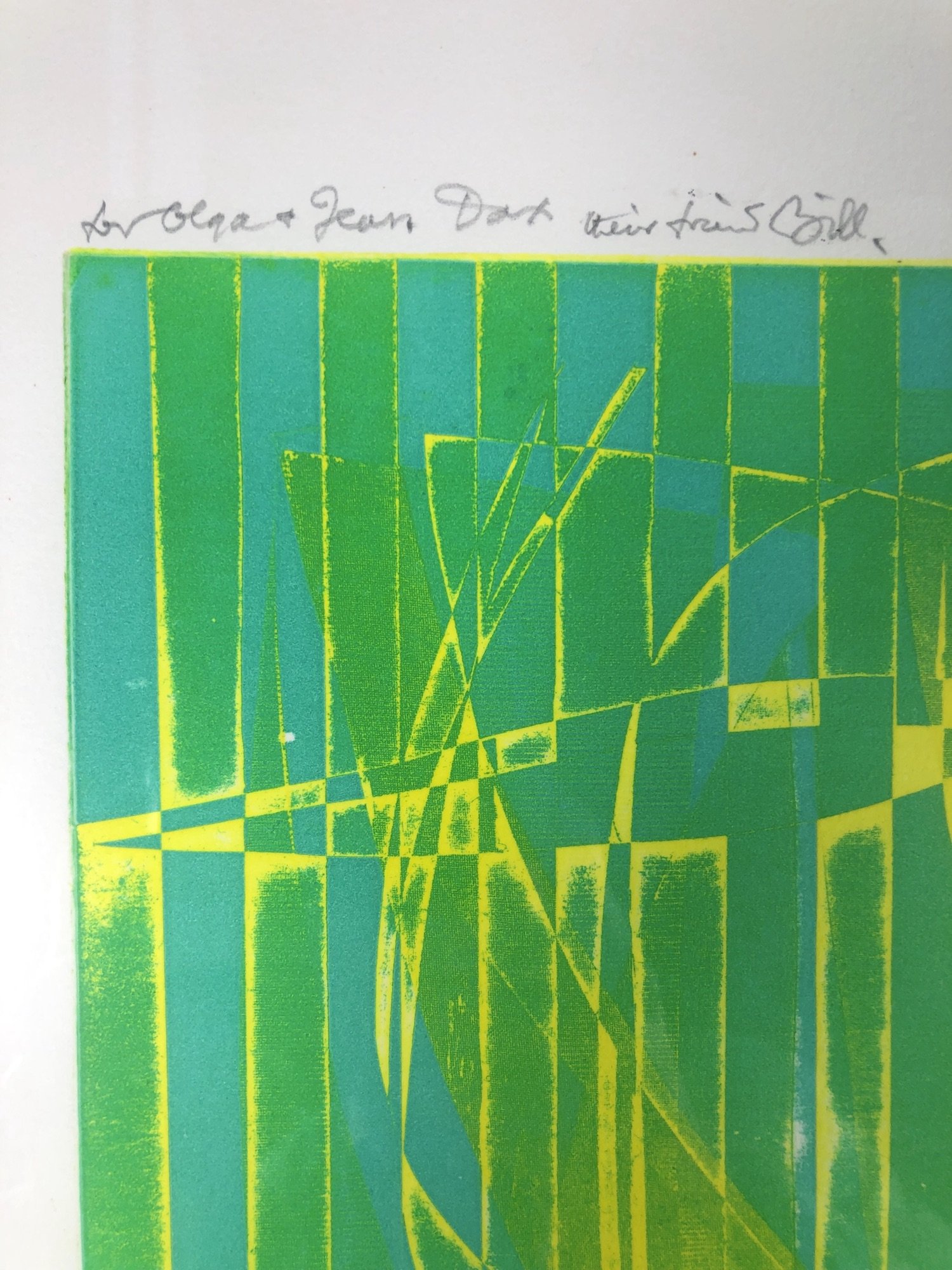Bouleau - Stanley William Hayter
Hand signed, dated, titled and numbered in pencil
Soft-ground colour etching on BFK Rives paper
Edition number VIII/XX
1976
Plate 40 x 50cm
Framed 53.5 x 71cm
Framed in gold painted wood frame
The title ‘Bouleau’ translates into English as ‘Birch’. Playful and brimming with energy, this etching is a colourful example of Hayter’s flowing form of mark-making and his predisposition to communicating an idiosyncratic understanding of natural forms.
The etching bears an inscription above the top left corner of the plate that reads, ‘for Olga & Jean Dart their friend Bill’.
This etching is from the roman numeral colour variant edition of 20, aside from the numbered edition of 50, plus 5 artist’s proofs.
The sheet itself appears to be in very good condition - it is unexamined outside of the frame. The frame itself has a few knocks to the corners and scratches on the surface.
Hand signed, dated, titled and numbered in pencil
Soft-ground colour etching on BFK Rives paper
Edition number VIII/XX
1976
Plate 40 x 50cm
Framed 53.5 x 71cm
Framed in gold painted wood frame
The title ‘Bouleau’ translates into English as ‘Birch’. Playful and brimming with energy, this etching is a colourful example of Hayter’s flowing form of mark-making and his predisposition to communicating an idiosyncratic understanding of natural forms.
The etching bears an inscription above the top left corner of the plate that reads, ‘for Olga & Jean Dart their friend Bill’.
This etching is from the roman numeral colour variant edition of 20, aside from the numbered edition of 50, plus 5 artist’s proofs.
The sheet itself appears to be in very good condition - it is unexamined outside of the frame. The frame itself has a few knocks to the corners and scratches on the surface.
Hand signed, dated, titled and numbered in pencil
Soft-ground colour etching on BFK Rives paper
Edition number VIII/XX
1976
Plate 40 x 50cm
Framed 53.5 x 71cm
Framed in gold painted wood frame
The title ‘Bouleau’ translates into English as ‘Birch’. Playful and brimming with energy, this etching is a colourful example of Hayter’s flowing form of mark-making and his predisposition to communicating an idiosyncratic understanding of natural forms.
The etching bears an inscription above the top left corner of the plate that reads, ‘for Olga & Jean Dart their friend Bill’.
This etching is from the roman numeral colour variant edition of 20, aside from the numbered edition of 50, plus 5 artist’s proofs.
The sheet itself appears to be in very good condition - it is unexamined outside of the frame. The frame itself has a few knocks to the corners and scratches on the surface.
Stanley William Hayter CBE (1901-1988) was an English painter and master printmaker.
Associated with surrealism in the 1930s and with abstract expressionism from 1940 onwards, Hayter is widely regarded as one of the most significant printmakers of the 20th century. Hayter is renowned for his innovative work in the development of viscosity printing (a process that exploits varying viscosities of oil-based inks to lay three or more colours on a single intaglio plate).
His interest in automatism led him to associate with the Surrealists, and in the United States he was an innovator in the Abstract Expressionism movement. His legacy in printmaking, (which came to dominate its instruction in the American academy) was a vigorous opposition to preparatory drawings and retroussage or hand-wiping with whiting, and endorsement of strong plate tone and improvisation.
In 1927 Hayter founded the legendary Atelier 17 studio in Paris. Since his death in 1988, it has been known as Atelier Contrepoint. Giants of the modern art world who frequented the atelier included Pablo Picasso, Alberto Giacometti, Joan Miró, Alexander Calder, Marc Chagall, Jackson Pollock, Mark Rothko and Wassily Kandinsky.
In 1926, Hayter went to Paris, where he studied briefly at the Académie Julian. That same year, he met Polish printmaker Józef Hecht, who introduced Hayter to copper engraving using the traditional burin technique. Hecht helped Hayter acquire a press for starting a printmaking studio for artists young and old, experienced and inexperienced, to work together in exploring the engraving medium. In 1927, Hayter opened the studio, and in 1933 he moved it to No. 17, rue Campagne-Première, where it became internationally known as Atelier 17.
Hayter worked with many contemporary artists to encourage their exploration of printmaking as a medium. Artists such as Miró, Picasso and Kandinsky collaborated on creating print editions (Fraternité and Solidarité) to raise funds for the support of the Republican cause in the Spanish Civil war.
At the outbreak of World War II, Hayter moved Atelier 17 to New York City and taught printmaking at the New School. Artists such as Jackson Pollock, Mauricio Lasansky and Mark Rothko made prints at the New York Atelier 17. Returning to Paris in 1950, Hayter took Atelier 17 with him.
Stanley William Hayter was a masterful and groundbreaking prolific printmaker, completing more than 400 works in the medium before his death in 1988. In 2005, the Tate Archive acquired Hayter's papers for their collection.







